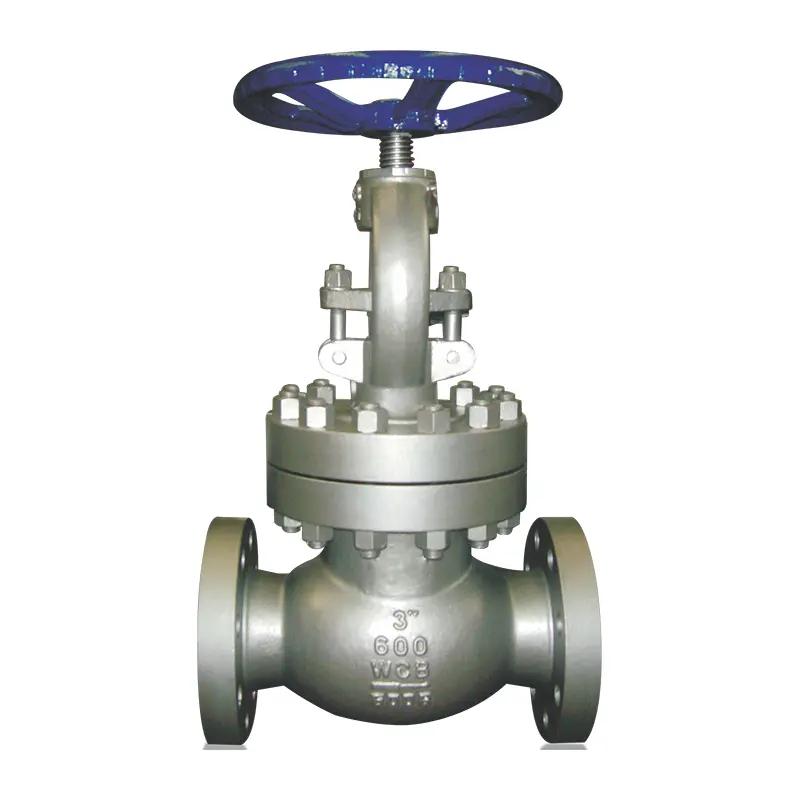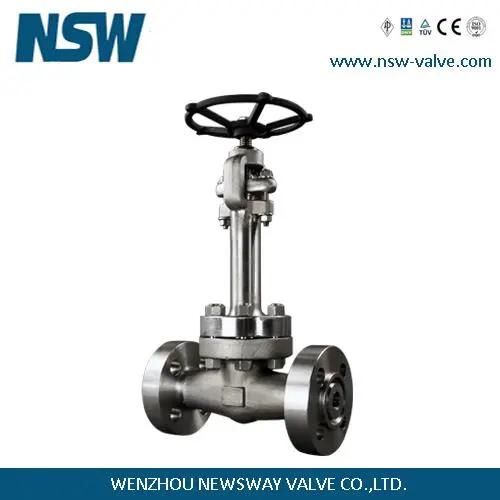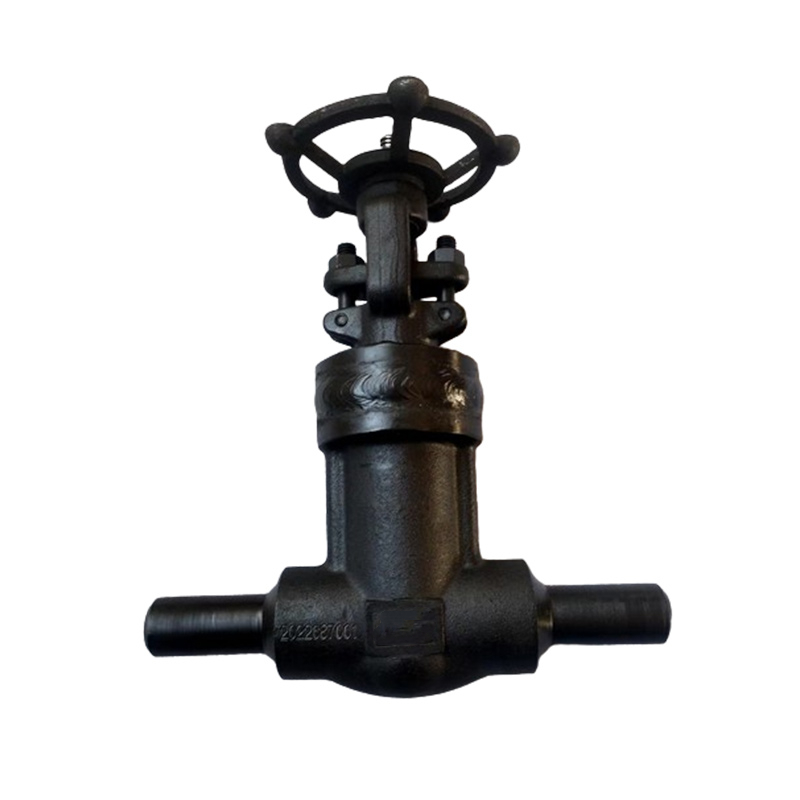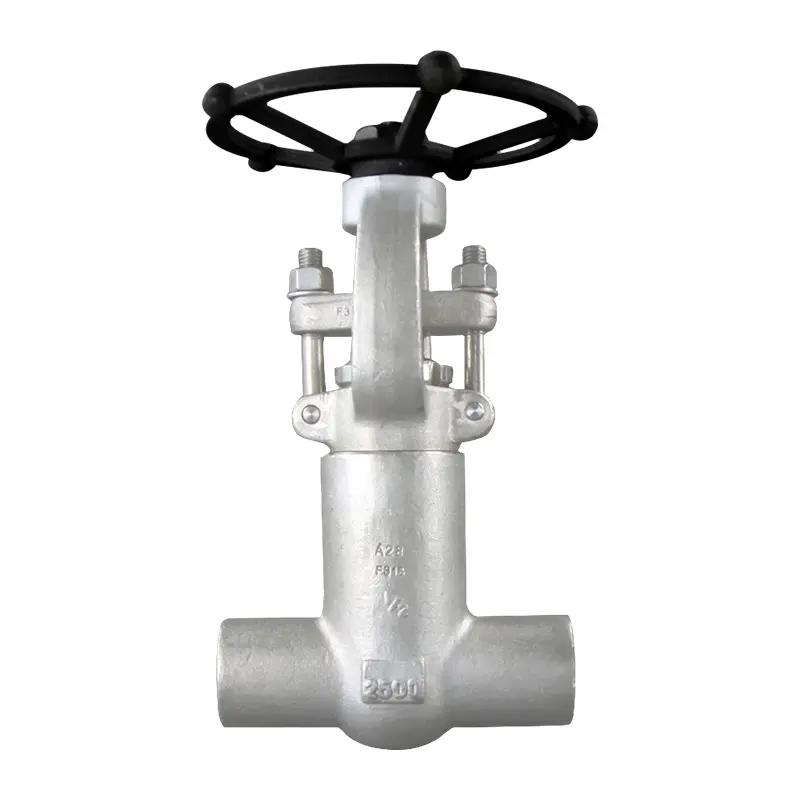
Products
BS 1873 Globe Valve Bolted Bonnet
✧ Description
The BS 1873 standard refers to a specific British Standard for globe valves with bolted bonnets. The designation "BS 1873" indicates that the valve conforms to the standards set forth by the British Standards Institution (BSI) for this type of valve.A globe valve with a bolted bonnet is a type of valve commonly used for regulating, isolating, or throttling the flow of fluid in a pipeline. The bolted bonnet design allows for easy access to the internals of the valve for maintenance and repair purposes.These valves are widely used in various industries, including oil and gas, petrochemical, power generation, and water treatment facilities. The bolted bonnet globe valve is suitable for applications where a tight shut-off is required and where frequent maintenance or inspection of the valve internals is necessary.BS 1873 globe valves with bolted bonnets typically adhere to specific design and performance criteria outlined in the standard to ensure their reliability and functionality. These criteria may include specifications for materials, pressure-temperature ratings, end connections, and other relevant features.When specifying or selecting a BS 1873 globe valve with a bolted bonnet, it is essential to consider factors such as the intended application, operating conditions, fluid properties, pressure and temperature requirements, and any applicable industry standards or regulations.If you have specific questions about the BS 1873 standard.
✧ Features of BS 1873 Globe Valve Bolted Bonnet
1. Frictionless opening and closing. This function completely solves the problem that the sealing of traditional valves is affected by the friction between the sealing surfaces.
2, top type structure. The valve installed on the pipeline can be directly checked and repaired online, which can effectively reduce the device parking and reduce the cost.
3, single seat design. The problem that the medium in the valve cavity is affected by abnormal pressure increase is eliminated.
4, low torque design. The valve stem with special structure design can be easily opened and closed with a small hand handle.
5, wedge sealing structure. The valve is sealed by the mechanical force provided by the valve stem, and the ball wedge is pressed to the seat, so that the sealing of the valve is not affected by the change of the pressure difference of the pipeline, and the sealing performance is reliably guaranteed under various working conditions.
6. Self-cleaning structure of sealing surface. When the ball tilts away from the seat, the fluid in the pipeline passes 360° evenly along the sealing surface of the ball, which not only eliminates the local erosion of the high-speed fluid on the seat, but also washes away the accumulation on the sealing surface to achieve the purpose of self-cleaning.
7, valve diameter DN50 below the valve body, valve cover is forging parts, DN65 above the valve body, valve cover is cast steel parts.
8, the valve body and the valve cover have different forms of connection, clamp pin connection, flange gasket connection and self-sealing thread connection.
9. The sealing surface of valve seat and valve flap are made of plasma spray welding or surfacing cobalt chromium tungsten carbide, which has high hardness, wear resistance, abrasion resistance and long service life.
10, the valve stem material is nitriding steel, nitriding valve stem surface hardness, wear resistance, abrasion resistance, corrosion resistance, long service life.
✧ Advantages of BS 1873 Globe Valve Bolted Bonnet
During the opening and closing process of the forged steel globe valve, because the friction between the disc and the sealing surface of the valve body is smaller than that of the gate valve, it is wear-resistant.
The opening or closing stroke of the valve stem is relatively short, and it has a very reliable cut-off function, and because the change of the valve seat port is proportional to the stroke of the valve disc, it is very suitable for the adjustment of the flow rate. Therefore, this type of valve is very suitable for cut-off or regulation and throttling.
✧ Parameters of BS 1873 Globe Valve Bolted Bonnet
| Product | BS 1873 Globe Valve Bolted Bonnet |
| Nominal diameter | NPS 2”, 3”, 4”, 6”, 8” , 10” , 12” , 14”, 16”, 18”, 20” 24”, 28”, 32”, 36”, 40”, 48” |
| Nominal diameter | Class 150, 300, 600, 900, 1500, 2500. |
| End Connection | Flanged (RF, RTJ, FF), Welded. |
| Operation | Handle Wheel, Pneumatic Actuator, Electric Actuator, Bare Stem |
| Materials | A216 WCB, WC6, WC9, A352 LCB, A351 CF8, CF8M, CF3, CF3M, A995 4A, A995 5A, A995 6A, Alloy 20, Monel, Inconel, Hastelloy, Aluminum Bronze and other special alloy. |
| A105, LF2, F5, F11, F22, A182 F304 (L), F316 (L), F347, F321, F51, Alloy 20, Monel, Inconel, Hastelloy | |
| Structure | Outside Screw & Yoke (OS&Y),Pressure Seal Bonnet |
| Design and Manufacturer | API 600, API 603, ASME B16.34 |
| Face to Face | ASME B16.10 |
| End Connection | ASME B16.5 (RF & RTJ) |
| ASME B16.25 (BW) | |
| Test and Inspection | API 598 |
| Other | NACE MR-0175, NACE MR-0103, ISO 15848, API624 |
| Also available per | PT, UT, RT,MT. |
✧ After Sale Service
As a professional forged steel valve manufacturer and exporter, we promise to provide customers with high-quality after-sales service, including the following:
1.Provide product usage guidance and maintenance suggestions.
2.For failures caused by product quality problems, we promise to provide technical support and troubleshooting within the shortest possible time.
3.Except for damage caused by normal use, we provide free repair and replacement services.
4.We promise to respond quickly to customer service needs during the product warranty period.
5. We provide long-term technical support, online consulting and training services. Our goal is to provide customers with the best service experience and make customers' experience more pleasant and easy.








